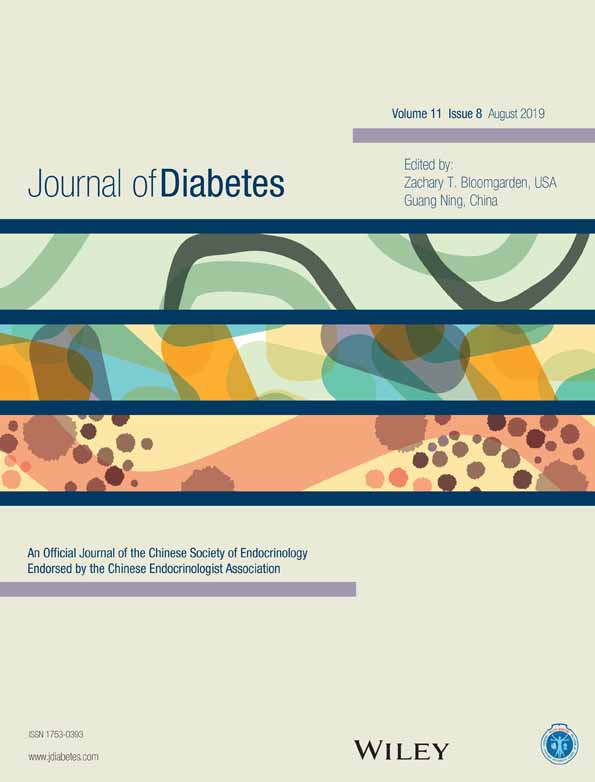Glucokinase and the potential of glucokinase activation in type 2 diabetes
葡萄糖激酶以及在2型糖尿病患者中激活葡萄糖激酶的潜能
The enzyme glucokinase (GK) plays a key role in pancreatic islet glucose sensing and hepatic glucose metabolism, and, for the past three decades, there has been interest in molecules acting on this enzyme as potential treatments for type 2 diabetes (T2D).1 Type 2 diabetes is associated with decreased liver and β-cell GK function and expression, and activating and inactivating mutations cause hypo- and hyperglycemia, respectively.1 The rate of glucose phosphorylation in β-cells, with GK the rate-limiting enzyme, is directly related to glucose concentration from 4 to 15 mM, controlling ATP production and hence insulin secretion.2 The role of GK in regulating hepatic glucose metabolism is even more complex. In the hepatocyte, GK-mediated conversion of glucose to glucose-6-phosphate (G-6-P) increases glycogen formation and, via conversion of glucose to fructose-6-phosphate (F-6-P), increases lipogenesis.3 Hepatic GK activity is modulated by an endogenous inhibitor, glucokinase regulatory protein (GKRP), which is localized in the nucleus as an inactive complex with GK at low glucose concentrations, with GK dissociating at high glucose concentrations and translocating to the cytoplasm.2 Fructose-1-phosphate, from dietary fructose, releases GK from GKRP, whereas F-6-P prevents dissociation of GK from the complex, leading to feedback inhibition of hepatic GK action. Polymorphisms associated with decreased feedback inhibition of F-6-P on GKRP, although increasing hepatic GK function and being associated with reductions in T2D, are associated with increased likelihood of non-alcoholic fatty liver disease (NAFLD) and hypertriglyceridemia, suggesting the latter as two potential adverse effects of interventions increasing hepatic GK activity.3 Eventual metabolic fates of G-6-P in the hepatocyte include glycolysis, glucose oxidation, glycogen synthesis, and production of glucose, lipids, urea, and urate. Further caveats in the endeavor to increase GK activity in the treatment of T2D are the potential that β-cell GK activation may cause glucotoxicity and accumulation of metabolites because of gene function abnormalities in T2D; there is also the potential that β-cell GK activation may cause hyperinsulinemic hypoglycemia and the unknown potential of GK activation to cause accumulation of metabolites in other tissues.1 MK-0941, a previously studied GK activator, increased blood triglyceride concentrations and systolic blood pressure levels, with a reduction in HbA1c through 14 weeks of treatment, but with evidence of reduced effectiveness after 22 and 30 weeks treatment.4 Among other GK activators studied, piragliatin led to dose-dependent decreases in both fasting and in 2-hour postprandial glucose, but with hypoglycemia, and AZD1656 reduced HbA1c at 4 months to a degree comparable to the effect of glipizide, with less hypoglycemia, but also with a suggestion that HbA1c lowering was not sustained.2 A suggested explanation for the loss of glucose-lowering effect of GK activators over time in T2D is that abnormal circulating insulin and glucagon concentrations elevate phosphate ester intermediates of glucose metabolism distal to G-6-P, reducing the effect of GK.5
The most recent study of a glucokinase activator is that of dorzagliatin, administered in increasing doses to 258 people with T2D over a 12-week period.6 In that study, there was a significant placebo-adjusted reduction in HbA1c of 0.4% and 0.8% with 50- and 75-mg doses of dorzagliatin given twice daily, from baseline levels of 8.3% and 8.5%, respectively. Fasting glucose did not fall, but 2-hour postprandial glucose fell significantly by 2.3 to 3.3 mM with dorzagliatin treatment, as well as with 75- and 100-mg once daily doses, which did not significantly affect HbA1c. Homoeostatic model assessment of insulin resistance (HOMA-IR) fell significantly in the 75-mg dorzagliatin twice daily group. Hypoglycemia was infrequent but did occur, with one person each in the 75-mg once daily and 75-mg twice daily groups having an episode of glucose <3.0 mM.6
Will the improvement in insulin sensitivity prove clinically relevant? Will the agent be effective beyond 12 weeks? Is the considerably greater effect seen on postprandial than fasting glucose suggestive of limited overall efficacy, or of greater safety? Alternatively, will hypoglycemia prove more of an issue? Although triglyceride levels were not increased, and liver histology in rodent and canine models did not show changes suggestive of NAFLD,7 future human studies should include liver imaging in a subset of treated people8 to address this potential adverse effect. Despite the tremendous advances seen with recent diabetes treatment approaches,9 the development of new approaches with novel mechanisms of action remains an important endeavor.
葡萄糖激酶(enzyme glucokinase,GK)在胰岛细胞葡萄糖传感以及肝脏葡萄糖代谢中都具有重要的作用,而且,在过去的三十年里,为了寻找潜在的2型糖尿病(T2D)治疗方法,人们对可以影响这种酶的分子一直都很感兴趣1。2型糖尿病与肝脏以及β-细胞GK功能下降以及表达减少有关,GK的突变激活或者失活可分别导致低血糖与高血糖1。在β细胞中葡萄糖磷酸化的速度(GK是限速酶)直接与葡萄糖浓度(从4到15 mM)相关,可以控制ATP的生成,从而控制胰岛素的分泌2。GK在调节肝脏葡萄糖代谢中的作用机制更为复杂。在肝细胞中,GK介导的葡萄糖转化为葡萄糖-6-磷酸(glucose-6-phosphate,G-6-P)可以增加糖原的生成,并且通过葡萄糖转化为果糖-6-磷酸(fructose-6-phosphate,F-6-P)从而增加脂肪的生成3。肝脏GK活性受内源性抑制剂葡葡糖激酶调节蛋白(glucokinase regulatory protein,GKRP)的调节,GKRP是一种非活性的复合物,在低葡萄糖浓度下与GK在细胞核中结合,在高葡萄糖浓度下与GK解离并转移到细胞质中2。来源于膳食果糖的果糖-1-磷酸可导致GK从GKRP中释放,而F-6-P可以阻止GK从复合物中解离,导致了肝脏GK作用的反馈抑制。与F-6-P对GKRP反馈抑制降低有关的基因多态性,虽然可以增加肝脏的GK功能并且与T2D减少有关,与非酒精性脂肪肝(non-alcoholic fatty liver disease,NAFLD)和高甘油三酯血症增加的可能性相关,这意味着增加肝脏GK活性的干预治疗会出现这两个潜在的副作用3。肝脏细胞中G-6-P的最终代谢途径包括糖酵解、葡萄糖氧化、糖原合成以及生成葡萄糖、脂类、尿素与尿酸盐。在试图增强GK活性治疗T2D的过程中,需要进一步警惕的是GK激活β-细胞后有可能因为T2D基因功能异常而导致葡萄糖毒性与代谢产物的蓄积;还有一种可能,那就是GK激活β-细胞后可以导致高胰岛素血症性低血糖,并且还存在目前尚未明确的GK激活后导致的其他组织中代谢产物蓄积1。MK-0941是一种既往研究过的GK激活剂,经过14周的治疗后,在HbA1c降低的同时伴随着血甘油三酯水平以及收缩压水平的升高,但是有证据表明治疗22周与30周后的疗效开始下降4。在其他GK激活剂的研究中,吡格列氨酸可导致空腹与餐后2小时血糖都出现剂量依赖性的下降,但伴有低血糖,而AZD1656治疗4个月后降低的HbA1c幅度与格列吡嗪的疗效相当,并且低血糖较少,但是同样也提示不能持续降低HbA1c2。在T2D患者中GK激活剂随着时间的推移而失去降糖作用,目前认为循环中浓度异常的胰岛素与胰高血糖素会导致葡萄糖代谢中的磷酸酯中间产物进一步转换为G-6-P,从而降低了GK的疗效5。
最近有一项关于葡萄糖激酶激活剂的研究,258名T2D患者在12周内使用剂量逐渐增加的多扎利坦进行治疗6。在该研究中,每日2次给予50 mg或者75 mg剂量的多扎利坦治疗组,校正安慰剂效应后的HbA1c从基线水平(8.3%与8.5%)分别显著降低了0.4%与0.8%。使用多扎利坦治疗后空腹血糖没有下降,但是餐后2小时血糖显著下降了2.3-3.3 mM,除此之外每日1次75 mg或者100 mg剂量组的HbA1c没有显著性变化。在每日两次75 mg剂量的多扎利坦组中,使用稳态模型评估的胰岛素抵抗(HOMA-IR)指数出现了显著下降。低血糖的发生较少,但确实有发生,在每日1次75 mg剂量组与每日2次75 mg剂量组中各有1名患者出现了1次血糖< 3.0 mM6。
是否能够证实胰岛素敏感性的改善具有临床相关性?药物在12周后有效吗?目前观察到,与空腹血糖相比这类药物对餐后血糖的影响明显更大,这是否意味着整体疗效有限,或者是更安全?另外,低血糖是否会成为一个更大的问题?尽管甘油三酯水平没有上升,并且啮齿类动物与犬类模型的肝脏组织学也没有表现提示NAFLD的变化7,为了明确是否存在潜在的不良反应,未来进行的人类研究应该包括在治疗人群亚组中进行的肝脏显像8。尽管糖尿病治疗方法在最近取得了巨大的进展9,我们仍然需要努力研制具有新的作用机制的药物。




